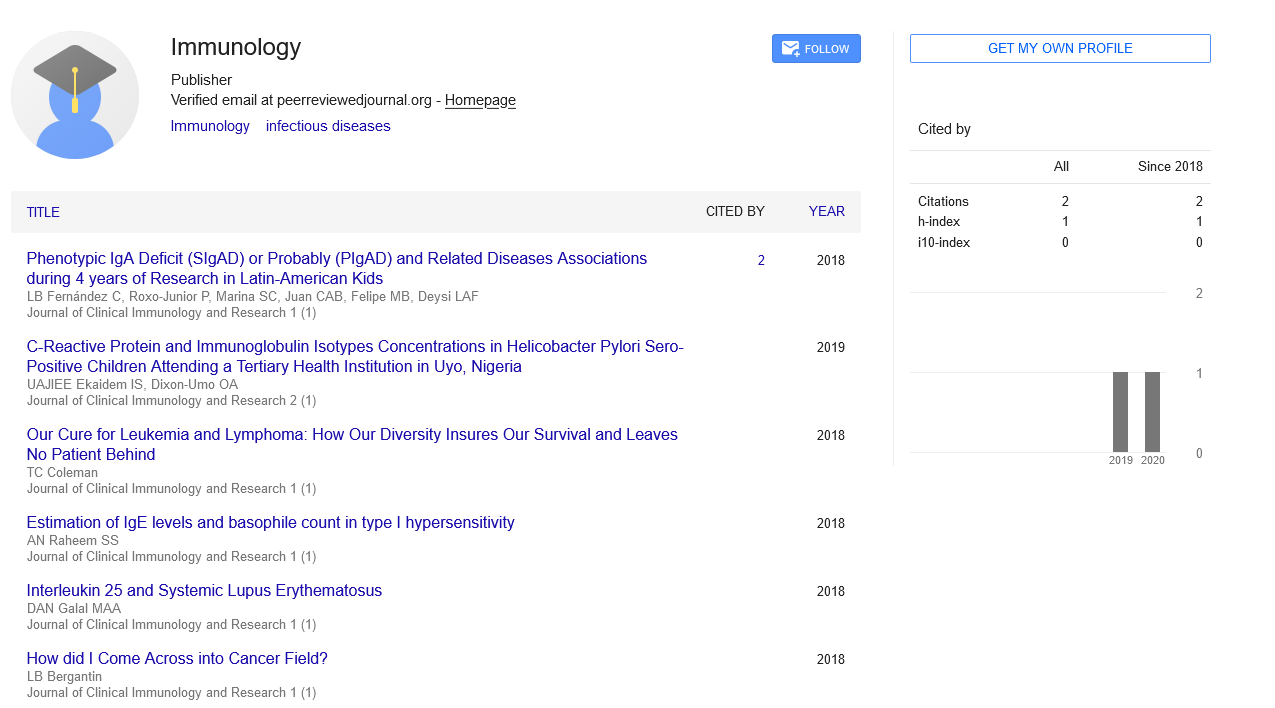Opinion Article, J Clin Immunol Res Vol: 6 Issue: 1
Methodology and Objective of Sentinel Lymph Node Biopsy
Alejandro Growdon*
1Department of Surgery, University of Brigham and Women's Hospital, Boston, United States of America
*Corresponding Author: Alejandro Growdon
Department of Surgery, University of Brigham and Women's Hospital, Boston,
United States of America
E-mail: alejgrow@partners.org
Received date: 19 March, 2023, Manuscript No. JCIR-23-99628;
Editor assigned date: 22 March, 2023, PreQC No. JCIR-23-99628 (PQ);
Reviewed date: 05 April, 2023, QC No. JCIR-23-99628;
Revised date: 12 April, 2023, Manuscript No. JCIR-23-99628 (R);
Published date: 19 April, 2023, DOI: 10.4172/JCIR.100073
Citation: Growdon A (2023) Methodology and Objective of Sentinel Lymph Node Biopsy. J Clin Immunol Res 6:1.
Description
Sentinel Lymph Node Biopsy (SLNB) is a surgical procedure commonly performed in the management of certain types of cancer, particularly breast cancer and melanoma. It is a minimally invasive technique used to determine the status of the regional lymph nodes and guide further treatment decisions.
Methodology
Preoperative lymphoscintigraphy: The first step in SLNB involves the preoperative injection of a radioactive tracer or a blue dye near the tumor site. This tracer or dye is taken up by the lymphatic vessels and transported to the regional lymph nodes, including the sentinel node—the first node to receive drainage from the tumor area. Lymphoscintigraphy is often performed to visualize the flow of the tracer and identify the sentinel node's location.
Intraoperative localization: During surgery, the surgeon uses a handheld gamma probe to locate the sentinel nodes based on the detected radioactivity or visual identification of the blue dye. The probe emits gamma radiation, and its readings guide the surgeon to the sentinel nodes. In some cases, a combination of both radioisotope and blue dye can be used to enhance the accuracy of localization.
Sentinel node excision: Once the sentinel node is identified, it is surgically excised and sent for pathological examination. The node is carefully dissected and removed, ensuring that the surrounding tissues are not damaged. The incision site is then closed, and the excised sentinel node is sent to the pathology laboratory for analysis.
Histopathological evaluation: In the pathology laboratory, the sentinel node undergoes thorough histopathological evaluation. The node is examined under a microscope to assess for the presence of cancer cells. This evaluation helps determine if cancer has spread to the regional lymph nodes and guides further treatment decisions.
Objective
Accurate staging: The primary objective of SLNB is to accurately stage cancer by identifying the presence or absence of metastasis in the regional lymph nodes. The sentinel node, being the first node to receive drainage from the tumor, is considered the most likely site of early metastasis. By evaluating the sentinel node, physicians can determine the extent of cancer spread and plan subsequent treatment strategies accordingly.
Selective lymph node evaluation: SLNB enables a more focused evaluation of the lymph nodes instead of resorting to complete lymph node dissection. By targeting only the sentinel nodes, unnecessary removal of multiple lymph nodes can be avoided, reducing the risk of complications such as lymphedema, shoulder dysfunction, and sensory changes.
Personalized treatment: The information obtained from SLNB helps tailor treatment plans to individual patients. If the sentinel node is free of cancer cells, it suggests that the cancer has not spread to the regional lymph nodes, allowing for a more conservative approach. Conversely, if cancer cells are detected in the sentinel nodes, additional lymph node dissection or adjuvant therapies may be recommended to manage the disease more aggressively.
Prognostic value: The presence or absence of metastasis in the sentinel nodes can provide valuable prognostic information. Patients with negative sentinel nodes generally have a better prognosis and may require less aggressive treatment. On the other hand, positive sentinel nodes indicate a higher risk of lymphatic spread and may necessitate additional treatments to improve outcomes.
Conclusion
SLNB is a valuable tool in cancer management, offering accurate staging, selective lymph node evaluation, personalized treatment planning, and prognostic information. By identifying the sentinel nodes and examining them for the presence of cancer cells, physicians can make informed decisions regarding further treatments and provide better patient care. The methodology of SLNB, involving preoperative lymphoscintigraphy, intraoperative localization, sentinel node excision, and histopathological evaluation, ensures a systematic and precise approach to lymph node assessment.
 Spanish
Spanish  Chinese
Chinese  Russian
Russian  German
German  French
French  Japanese
Japanese  Portuguese
Portuguese  Hindi
Hindi 